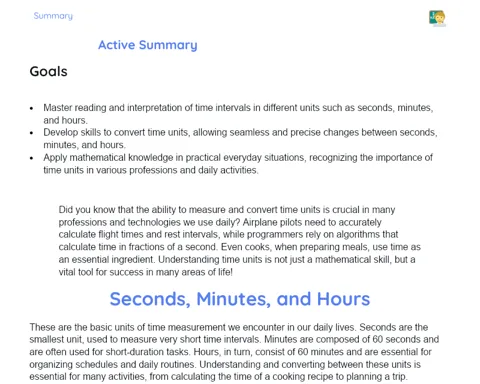Exploring Revolution Shapes: Practice and Application
Objectives
1. Understand and solve problems involving areas and volumes of revolution shapes, such as cones.
2. Use the Pappus-Guldin theorem to calculate volumes and areas of revolution shapes.
Contextualization
Revolution shapes, such as cones and cylinders, are present in many aspects of our daily lives. From the architecture of modern buildings to the manufacturing of industrial parts, these geometric shapes play a crucial role. For example, the design of beverage bottles and storage containers uses concepts of revolution shapes to optimize the use of material and space. Understanding how to calculate their areas and volumes is essential for various fields, such as engineering, design, and manufacturing.
Relevance of the Theme
The study of revolution shapes and the Pappus-Guldin theorem is fundamental not only for mathematics but also for various professions, such as engineering, architecture, and product design. This knowledge is applied in the construction of automotive and aerospace parts, optimizing materials in manufacturing processes, and many other contexts in the job market. Mastering these concepts prepares students to face real challenges and solve practical problems in their future careers.
Revolution Shapes
Revolution shapes are three-dimensional forms obtained by rotating a flat figure around an axis. Common examples include cones, cylinders, and spheres. These objects are often found in everyday and industrial applications, such as containers, gears, and structural components.
-
Definition: Three-dimensional shapes formed by the rotation of a flat figure around an axis.
-
Examples: Cones, cylinders, and spheres.
-
Applications: Used in containers, gears, and structural components.
Calculation of Areas and Volumes
Calculating areas and volumes of revolution shapes is an essential skill in various disciplines, such as engineering and design. The surface area and volume of a cone, for example, can be calculated using specific formulas involving the radius of the base and the height.
-
Base Area: Calculated as πr² for circles.
-
Lateral Area: For cones, it is πrl, where l is the slant height.
-
Volume: For cones, it is (1/3)πr²h, where r is the radius of the base and h is the height.
Pappus-Guldin Theorem
The Pappus-Guldin theorem provides a way to calculate the surface area and volume of a revolution shape. The theorem states that the volume of a solid of revolution is equal to the product of the area of the flat figure that generates the solid by the distance traveled by its centroid during the revolution.
-
Volume: Product of the area of the flat figure by the distance traveled by the centroid.
-
Surface Area: Calculated through the arc length and the revolution.
-
Applications: Fundamental in engineering for calculating volumes of complex objects.
Practical Applications
- Bottle Design: Optimizing materials and space using concepts of revolution shapes.
- Automotive Engineering: Calculating volumes and materials needed for automotive parts with complex shapes.
- Architecture: Creating modern architectural structures using revolution shapes for aesthetics and functionality.
Key Terms
-
Revolution Shapes: Three-dimensional forms obtained by rotating a flat figure around an axis.
-
Pappus-Guldin Theorem: Method for calculating areas and volumes of revolution shapes.
-
Base Area: The flat surface at the base of a revolution shape, such as a circle in a cone.
-
Volume: Measure of the three-dimensional space occupied by a figure.
Questions
-
How are the revolution shapes we learned about applied in your daily life? Give examples.
-
Why is it important for an engineer or designer to understand how to calculate areas and volumes of revolution shapes?
-
How can the Pappus-Guldin theorem be used to solve real-world problems? Cite a practical example.
Conclusion
To Reflect
In this lesson, we explored revolution shapes, such as cones and cylinders, and learned to calculate their areas and volumes. Using the Pappus-Guldin theorem, we saw how to determine these measurements accurately and in application. We reflected on the importance of these concepts in various professions, such as engineering, architecture, and product design, and how they are essential for solving practical problems in the job market. The practical activity of constructing a cone helped us visualize and apply the concepts learned, facilitating our understanding of the formulas and their real applications.
Mini Challenge - Practical Challenge: Construction and Calculation of a Cylinder
In this mini-challenge, you will construct a cylinder using simple materials and calculate its total area and volume. This activity will reinforce your knowledge of revolution shapes and their practical applications.
- Divide into groups of 3 to 4 students.
- Use a sheet of poster board to draw two circles with the same radius and a rectangle whose width is equal to the circumference of the circles.
- Cut out the circles and the rectangle.
- Form the cylinder by joining the ends of the rectangle with tape and placing the circles at each end as bases.
- Measure the radius of the bases and the height of the formed cylinder.
- Calculate the total area (area of the bases + lateral area) and the volume of the cylinder using the appropriate formulas.
- Each group should present their results and discuss any difficulties encountered during the activity.



